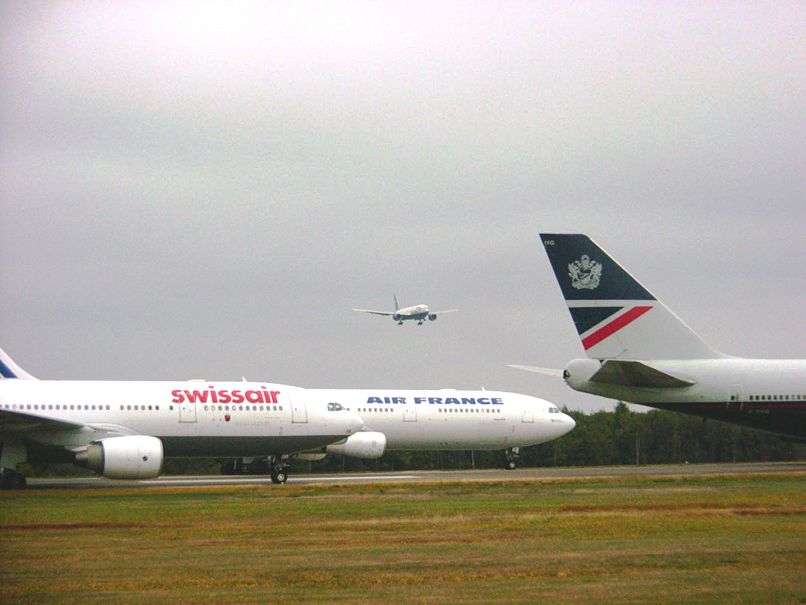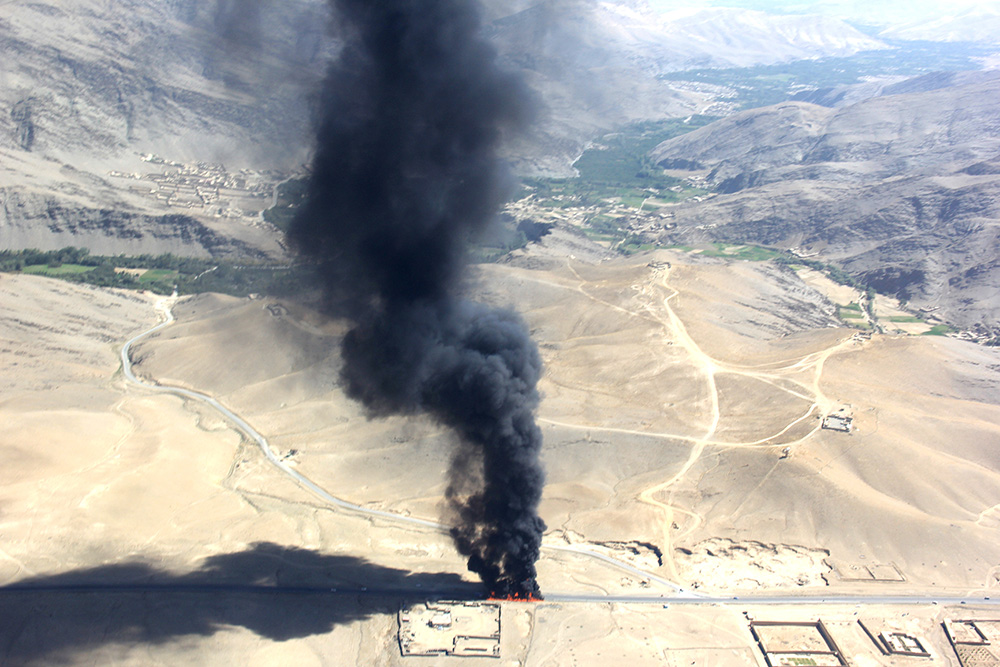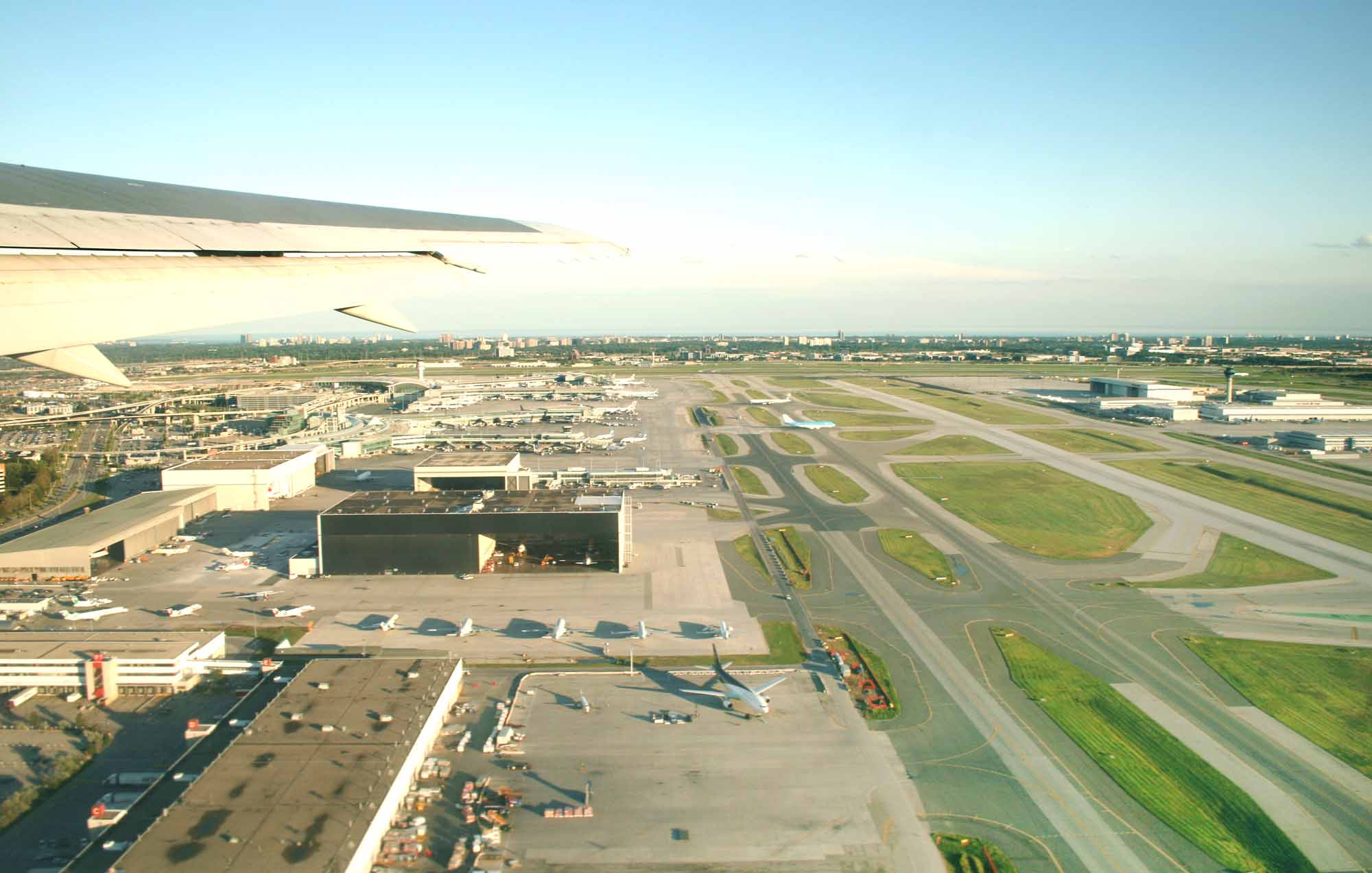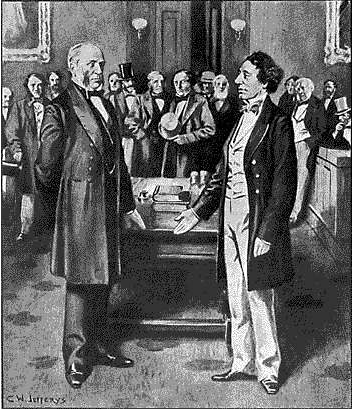
Airliners as Weapons
The world watched in horror on 11 September 2001 as radical Islamist al-Qaeda terrorists launched a series of coordinated attacks on New York and Washington, DC. Nineteen terrorists hijacked four airliners, deliberately flying two of them into the World Trade Center towers in New York City, and a third into the Pentagon building in Arlington, Virginia, on the outskirts of Washington.

Passengers on the fourth plane, Flight 93, fought back against their hijackers and their aircraft crashed into a field in Pennsylvania.
The attacks killed almost 3,000 people from 93 countries, most of the deaths occurring during the collapse of the World Trade Center towers.
Airspace Emergency
As the violence unfolded, the US moved quickly to thwart any further attacks. At 9:45 a.m. (Eastern Time), one hour after the first passenger airline flew into the North Tower of the World Trade Center, the Federal Aviation Administration (FAA) ordered all civilian aircraft to land. The National Airspace System was officially shut down at 11:06 a.m.
David Collenette, Canada’s transport minister, followed suit, grounding all flights in and out of Canadian airports. Canada’s military took control of the skies, implementing the Emergency Security Control of Air Traffic Plan, something usually reserved for times of war.
As these measures were being imposed, some 500 airplanes from around the world were en route to the United States. Planes with enough fuel were told to return to their airport of origin, and the rest were diverted to airports across Canada. Fearing the attacks may not be over and worried that other planes could be turned into “destructive missiles,” Transport Canada instructed NAV CANADA (the agency that handles air traffic control) not to redirect planes to large urban areas, such as Toronto, Ottawa and Montreal.

Over the next few hours, more than 200 planes were diverted to Canadian airports. Transport Canada says 224 flights carrying 33,000 passengers landed on Canadian soil, while NAV CANADA says 238 planes landed. Flights originating from Asia were diverted to Vancouver and other airports in western Canada, while planes on the busy transatlantic route were diverted to airports in Atlantic Canada.
Halifax International Airport received the largest number of flights (47 planes carrying more than 7,000 passengers), while Vancouver International Airport received the highest number of passengers (34 planes carrying 8,500 passengers).
Communities Respond
Dealing with thousands of unexpected visitors proved to be a major challenge. With security concerns paramount, each plane had to be searched and every passenger screened. Some were forced to remain on the tarmac at various airports for more than 24 hours. Once screened, the passengers needed to be housed and fed. Local officials, charitable organizations and volunteers scrambled to find schools and community halls, beds and blankets, and food and coffee for thousands of stranded passengers.
Nowhere was that challenge greater than in Gander, Newfoundland, where 37 flights were diverted to the town’s airport. The community of less than 10,000 people suddenly had to find shelter and food for 6,700 people. School bus drivers who were on strike left their picket lines in order to provide transportation to area schools and halls. Medical prescriptions were filled by pharmacies at no cost, and people opened their homes to passengers in need of a coffee or a shower.
Alan Flood, of Bristol, England, who was stranded with his wife, Barbara, summed up the feelings of hundreds of passengers when he said, “We were strangers. They didn’t know what we were like. They took us to their homes, made sure we wanted for nothing, treated us as part of the family.”
Shirley Brook-Jones and the passengers from her flight were cared for in the nearby community of Lewisporte, Newfoundland. On their flight home six days later, Brook-Jones suggested
to passengers that they should start a scholarship for local students as a way to thank the community. By the time the plane landed in Atlanta, passengers had pledged $15,000. Word spread and the fund grew. By 2014, the fund had committed $1.5 million
and awarded more than 130 scholarships to students in Newfoundland.
On the 10th anniversary of the attacks, in 2011, US President Barack Obama said Americans “remember with gratitude and affection how the people of Canada offered us the comfort and friendship and extraordinary assistance that day and in the following days, by opening their airports, homes and hearts to us.”
Canadian Victims
Of the 2,973 people who died in the 9/11 attacks, 24 were Canadian. Among those killed:
Former NHL player Garnet (Ace) Bailey, 53, was aboard United Airlines Flight 175 when it crashed into the South Tower of the World Trade Center.
Meredith Ewart, 29, and Peter Feidelberg, 34, originally from Montréal, were working on the 104th floor of the World Trade Center’s South Tower. The couple had been married for 18 months.
Christine Egan, 55, a nurse from Winnipeg, was visiting her brother Michael, 51, at his office on the 105th floor of the World Trade Center. Both were killed.
Ken Basnicki, 48, of Toronto, was attending a conference at his company’s head office on the 106th floor of the World Trade Center. Following his death, his widow, Maureen, started the Canadian Coalition Against Terror, an organization that successfully lobbied the federal government to enact legislation allowing Canadian victims to sue countries or groups that support terrorism.
The Last Survivor
On the morning of 11 September, Ron DiFrancesco, from Hamilton, Ontario, was in his office at Euro Brokers on the 84th floor of the South Tower of the World Trade Center when, at 8:46 a.m., a passenger plane crashed into the North Tower. An announcement over the building’s public address system told everyone the building was secure and there was no reason to evacuate, but after speaking with colleagues, and with his wife on the phone, DiFrancesco decided to leave.
As he headed to the elevators, DiFrancesco was thrown against the wall as United Flight 175 struck the building between the 77th and 85th floors. As DiFrancesco and his colleagues started down one of the emergency stairwells, there was smoke, fire, debris and confusion. By the time he made it to the 79th floor, the stairwell was blocked by a collapsed wall. As people lay on the floor desperately trying to escape the smoke, some losing consciousness, DiFrancesco says he heard a “powerful voice” inside him that told him to keep going. He found a hole in the wall and ran through flames and burning debris for the next three stories.
When he finally reached ground level, DiFrancesco says he saw a fireball and heard an “ungodly roar” as the building collapsed. DiFrancesco woke up three days later in Saint Vincent’s Hospital in Manhattan. He is believed to be the last person to make it out of the building alive, and the US 9/11 commission report says he was one of only four people to escape who were working above the 81st floor.
War in Afghanistan

In the days after the attacks, Canada joined a coalition of nations in the so-called “War on Terror.”
In October 2001, Canadian naval ships were dispatched to the Arabian Sea off southwest Asia to patrol the seas for vessels engaged in illegal activity.
In December 2001, commandos from Canada's elite Joint Task Force 2 (JTF2) were sent to Afghanistan to join American, British and other international forces fighting the Taliban. More soldiers soon followed and Canada would stay in the region until 2014. By the time the operation ended, 40,000 Canadian Armed Forces members had served in Afghanistan and 158 soldiers had lost their lives.
Anti-Terror Laws
The Canadian government enacted a number of new security measures to combat terrorism at home, increasing security at airports, ports and border crossings, as well as enacting new in-flight security rules for airlines.
In 2001, the Liberal government passed controversial legislation called the Anti-Terrorism Act. The law's "preventative arrest" provision allowed police to bring a person suspected of terrorist activity before a judge, who could curtail their freedom — for example, forbidding them from communicating with specific individuals. The law also created "investigative hearings" in which suspected terrorists who had not yet been charged with any crime could be compelled to testify at secret judicial hearings.
These two elements of the legislation had a sunset clause of five years; the rest of the Anti-Terrorism Act remained.
The Conservative government of Prime Minister Stephen Harper tried four times to resurrect the two provisions, finally succeeding in 2013 with the Combating Terrorism Act. That law renewed preventative arrests and investigative hearings for five years. It also made it a crime to leave Canada to engage in terrorist activities and included stiffer penalties for harboring a person involved in terrorism.
Canadians Killed on 9/11
(Source: Canadian Press)
|
Michael Arczynski, 45, married with six children. A seventh child was born after the attack. |
|
Garnet (Ace) Bailey, 53, married with one son. Played 11 years in the NHL. |
|
David Barkaway, 34, married with two children. One son born four months after the attack. |
|
Ken Basnicki, 48, married with two children. Widow founded Canadian Coalition Against Terror. |
|
Joseph Collison, 50, was planning to adopt a young boy whom he cared for. |
|
Cynthia Connolly, 40, married. Transferred to New York from Montreal in 1999. |
|
Arron Dack, 39, married with two children. Wife started two support groups for widows. |
|
Christine Egan, 55, a nurse from Winnipeg who was visiting her brother in New York. |
|
Michael Egan, 51, married with two children. |
|
Albert Elmarry, 30, married. His wife gave birth to a daughter six months after his death. |
|
Meredith Ewart, 29, married to Peter Feidelberg, who was also killed in the attacks. |
|
Peter Feidelberg, 34, had been married to Meredith Ewart for just 18 months |
|
Alexander Filipov, 70, married with three sons. Was on American Airlines Flight 11. |
|
Ralph Gerhardt, 34, single. Described as a family-oriented man who was close to his parents. |
|
Stuart Lee, 30, married. Loved travelling with his wife. |
|
Mark Ludvigsen, 32, married. An avid rugby player originally from New Brunswick. |
|
Bernard Mascarenhas, 54, married with two children. In New York on a business trip. |
|
Colin McArthur, 52, married. Widow set up scholarship in his name at University of Glasgow. |
|
Michael Pelletier, 36, married with a three-year-old daughter and one-year-old son. |
|
Donald Robson, 52, married with two sons. Was planning couple’s 24th wedding anniversary. |
|
Ruffin (Roy) Santos, 37, single. A native of Manila, moved to BC in the 1980s. |
|
Vladimir Tomasevic, 36, married. Was attending a conference on his first visit to New York. |
|
Chantal Vincelli, 38, single. Was setting up a kiosk for a trade show on the 106th floor. |
|
Debbie Williams, 35, married with one child. Friends built a playground in her name in a local park. |

 Share on Facebook
Share on Facebook Share on X
Share on X Share by Email
Share by Email Share on Google Classroom
Share on Google Classroom





